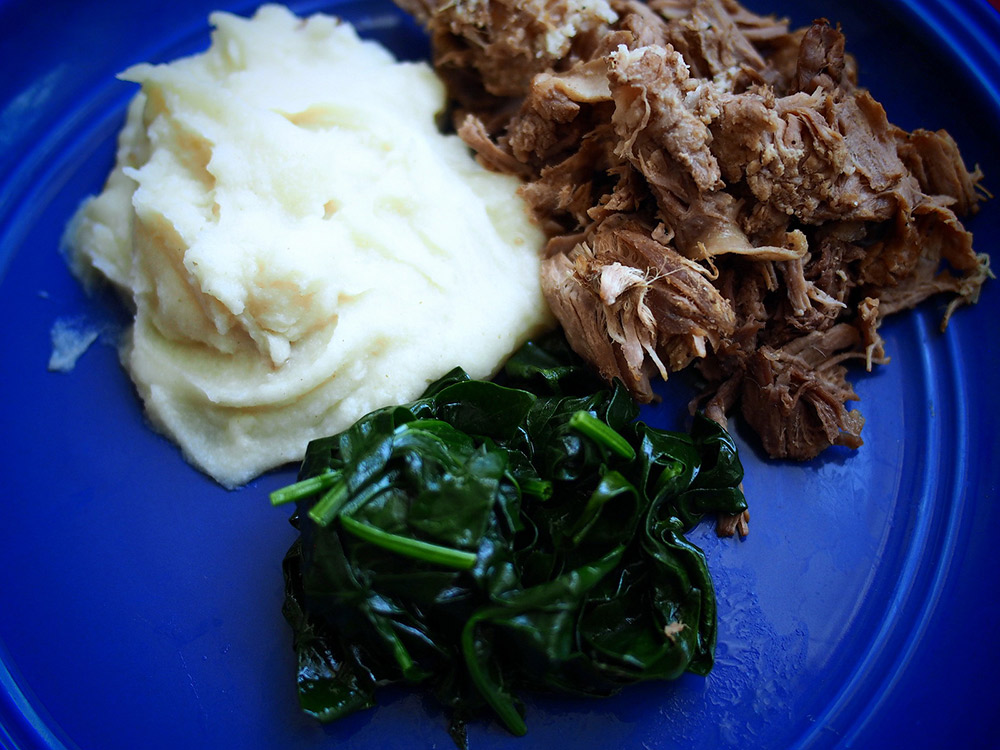According to Mark Kurlansky, author of the book Salt: A World History, salt consumption is on the decline: “The average 20th century European consumed half the amount of salt as the average 19th century European,” he writes. This could be because, historically, salt was a lifesaver, used to preserve cod for a long ship ride, vegetables for a long winter, or meat for consumption later in the season.
When refrigeration was invented, salt curing and preserving became less of an imperative, since meat and fish last longer when cooled, or almost indefinitely when frozen. Salt-curing is still common, but it’s no longer necessary; salt itself is more commonly used as a tool for making food taste good than it is a tool for survival. Brining chicken, for instance, is touted as a way to ensure the meat is more tender by disrupting the structure of the muscle filaments of the meat. And tenderizing a cheap cut of red meat with salt can apparently help it “taste like filet mignon” — even if it’s not.
In Botswana, long before salt was being used to transform cheap cuts of meat into mock filet mignon, people were cooking seswaa. As the national dish of Botswana, seswaa is served at weddings, funerals, and other celebrations. Seswaa's ingredients are very straightforward: meat on the bone, water, and salt. The salt, added while the meat cooks, helps to soften the meat until it is ready to be pounded with a pestle and served atop pap, which is stiffened cornmeal.

Seswaa, which is meat cooked on the bone with water and salt, is served with pap, which is made from cornmeal.
The Republic of Botswana is a landlocked country in southern Africa, and was formerly a British protectorate called Bechuanaland. In 1966, the country gained its independence, and has remained a representative democracy ever since. About the geographic size of France, Botswana is mostly flat and predominantly desert; the Kalahari occupies close to 70 percent of its land.
Despite the dominance of the Kalahari, Botswana’s grasslands and deltas house incredibly diverse wildlife. Indeed, most tourists visit Botswana for the unique ecosystem and wildlife of the Okavango Delta, a UNESCO World Heritage site and one of the seven natural wonders of Africa, as well as the Chobe National Park and its elephants.
While the country is not necessarily known for its cuisine, I am a writer who loves to eat. So I wanted to spotlight Botswana's national dish — and make it myself in my own home in Mexico. Here’s how it turned out, plus my recipe if you want to try it yourself (wherever in the world you may be).
How to make seswaa
As I wrote in my piece on corn in Zimbabwe, Africa now accounts for 6.5% of the world’s corn production, despite the grain’s origins in Mexico. In Botswana, the recipe would be prepared in three-legged iron pots, over a fire. I don’t have either, so the recipe below is adapted to cook the beef in a slow cooker and — at the suggestion of this Guardian recipe — with the addition of bay leaves and black pepper.

The raw ingredients that writer Jodi Ettenberg used to make her seswaa.
Served with pap (also called phaletshe), and morogo, spinach-like greens that are boiled (I just used regular spinach, with an added pinch of salt, of course) it's a colourful, hearty plate of food.

Seswaa ingredients ready for a few hours in the slow-cooker.
Ingredients:
-
1,000g / 2.2 lbs beef, bone-in (I used chuck shoulder)
-
4 bay leaves
-
2 tsp salt
-
¼ tsp black pepper
-
1-2 cups of water, or enough to cover the meat
Method:
-
Place all ingredients in the slow cooker and cook on high for 4–5 hours.
-
If cooking on high, check on the meat after 4 hours; if cooking on low, check on the meat after four hours. If it falls off the bone easily, it’s about done. If it’s still clinging to the bone, give it some more time.
-
When cooked, remove the meat from the slow cooker and let it cool to room temperature.
-
Using a mortar and pestle, pound the meat down until it resembles pulled or shredded beef. If you do not have a mortar and pestle, you can pull the meat apart with two forks until it’s fully shredded.
How to make pap
Ingredients:
-
2 cups water
-
1 tsp salt
-
1 cup white cornmeal
-
2 tsp butter
Method:
In a large saucepan, bring the water and the salt to a boil. Add the cornmeal and cover. Reduce the heat to medium-low and stir the cornmeal every 5 minutes, as it cooks. After 30 minutes of cooking, add the butter and stir in until fully melted. Turn off the heat and put the lid on the pot to let the pap stiffen as it cools.
Getting There
Take our Botswana and Victoria Falls Adventure tour for the chance to try some of Botswana’s cuisine for yourself. We’re thrilled at the prospect of showing you this big blue planet of ours — check out our small group trips here.























